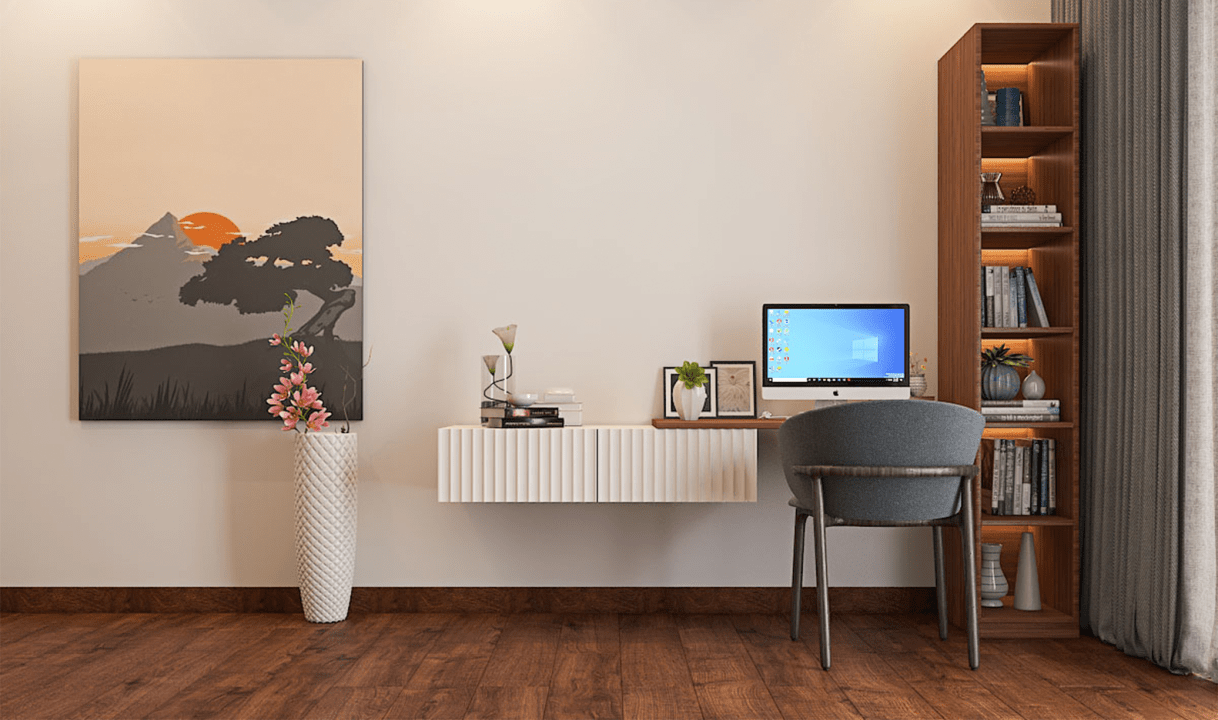
If the “less is more” principle has started to look more and more appealing to you recently and you find yourself reading all about minimalism and simple living, we’ve prepared another good read for you.
If you’ve already “kondoed” all your drawers under the guidance of Marie Kondo and her The Life-Changing Magic of Tidying Up, voluntarily got rid of a few bags with clothes, and probably pained the walls in your room white, we have another suggestion. How about creating a minimalist library?
We’re positive you tend to curate your collection in some way or another, and you’ve already done your best to organize your books to make the space you live in more, well, spacious, less cluttered, and nicer. Yet, a minimalist library is a bit more than one of the ways how to declutter books.
- What Is Minimalism?
- What Does a Minimalist Library Look Like?
- What Is the Difference between a Minimalist and a Traditional Library?
- Why a Minimalist Library Is a Great Idea?
- How to Organize a Minimalist Library
- Declutter and Remove the Rest
- A Sample Minimalist Library
- Minimalist Books for Inspiration
- Final thoughts
What Is Minimalism?
Quite a popular trend, minimalism stems from the “voluntary simplicity” movement. In a world of over-consuming, ecological and financial problems, and overall loss of meaning, it’s no surprise it got so many followers over the years.
As a minimalist, you choose to own things that you love, a selected list of things that are meaningful for you and serve some purpose. When it comes to books, this means that you only have your favorite books, the ones that you are eager to re-read or just to own.
What Does a Minimalist Library Look Like?
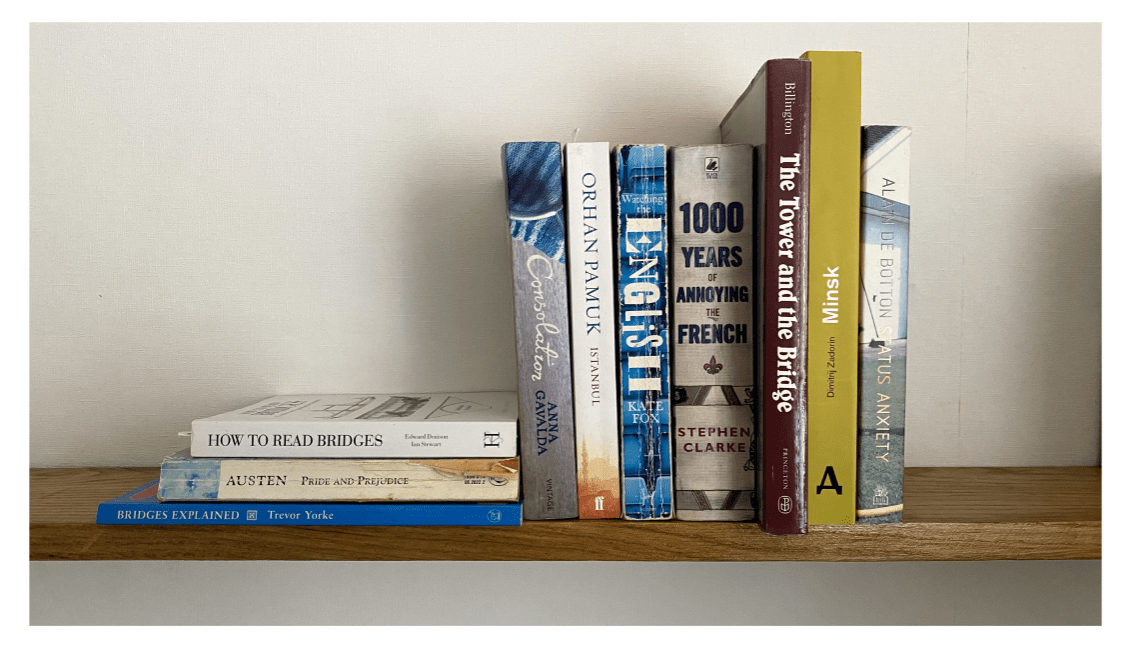
So, a minimalist library is your carefully curated collection of books that are thoroughly selected. It can include just a dozen of books or up to a hundred or two hundred, but still, it’s a relatively small collection. The books in such library are either high-quality, useful, or bring some cherished memories, but they are your absolute favorites.
The key idea is that you don’t buy all sorts of books or keep all the books you’ve ever read. After all, we read most of the books just once, and there’s a very small percentage of the books we get back to. In the minimalist approach, you choose a more enjoyable reading experience by choosing to keep your favorites. Besides, you save money and free up space.
What Is the Difference between a Minimalist and a Traditional Library?
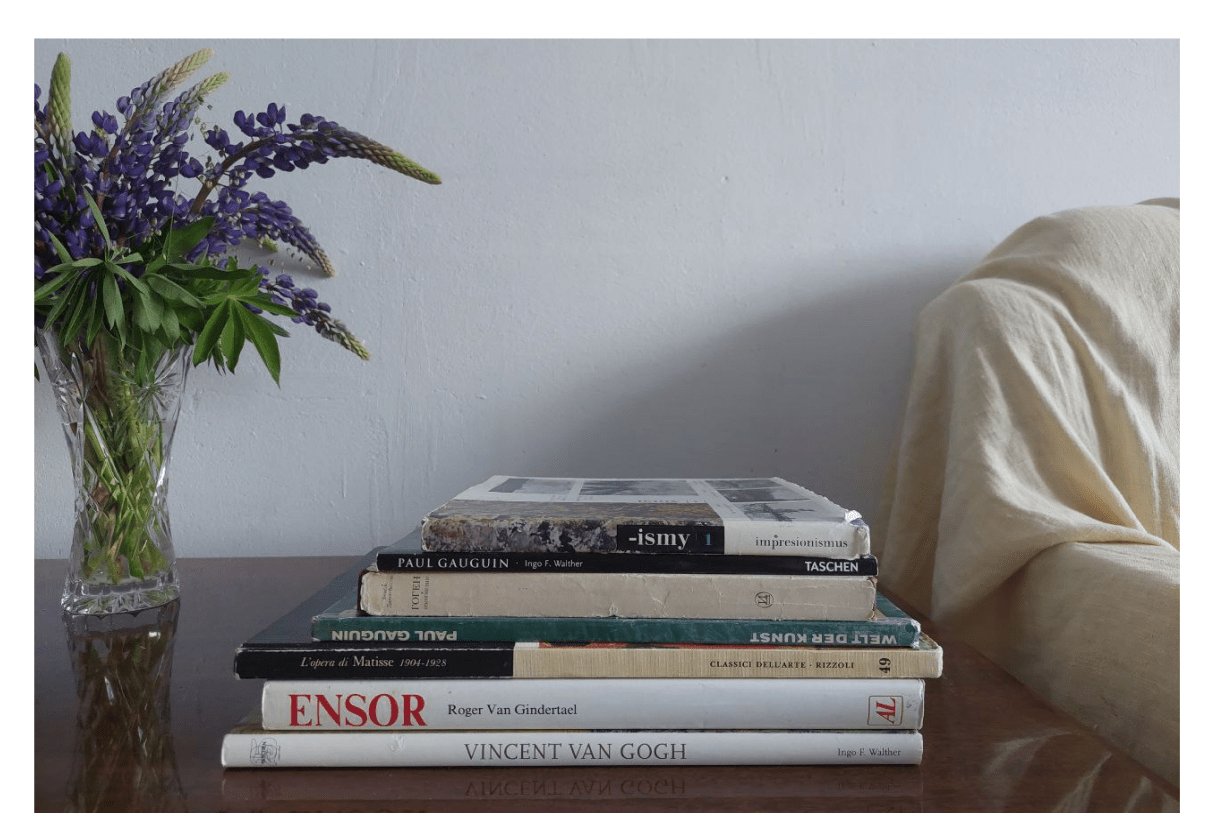
When your goal is to create an extended library that will last generations and can be passed to your children and grandchildren, you invest time, effort, and money. It’s an enterprise that you grow and enrich all the time. You may start by keeping all the books you read, but you also buy all sorts of books on purpose, from must-have classics and fiction to autobiographical novels, art books, and so on. The goal is to be able to use it at any time, whenever you need a book from the school curriculum or just feel like a Jane Austen tonight.
Depending on your interests and professional sphere, you can dedicate a shelf or even an entire wall to the topic that interests you specifically. If you’re a doctor or work in the medical field, you will have books and textbooks on this topic. If you’re interested in art, you’ll include lots of beautiful art books, and if you’re a bridge lover and admirer, you’ll add a few books about structural engineering and architecture.
Why a Minimalist Library Is a Great Idea?
Apart from what we’ve already mentioned (taking a more conscious approach to the things you choose in your life), you sort of limit your everyday selection to only a few books that you can re-read at any time.
We think it’s the best option if you live in a small house and have little space. Keeping only essential books is a way to both own a library and not be overwhelmed by the number of books. With just a shelf or a bookcase to store your collection, you don’t have books lying around the house gathering dust.
You get more freedom to choose what you read by getting new books from a library, online, or anywhere else (we’ll get to that later).
How to Organize a Minimalist Library
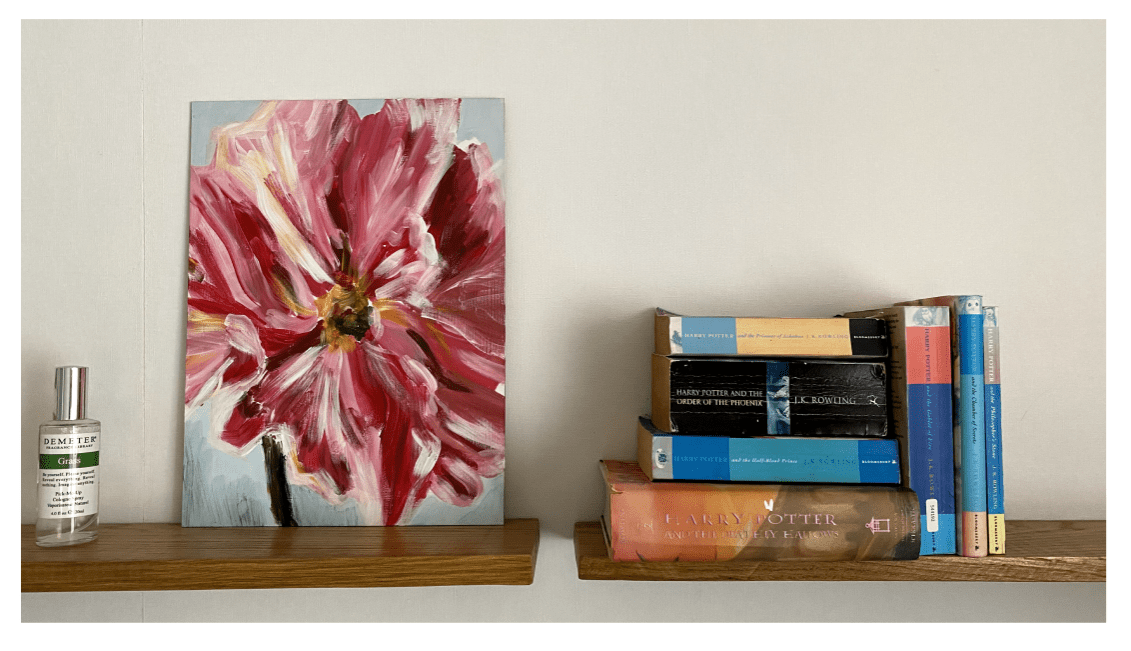
- Make a list of what you love. First and foremost, you should ask yourself what kind of books you always want to have on hand. The Harry Potter series? The Remaque’s collection? At this point, you should also decide how many books you need, whether you’re going to keep all that you already have, and also what you will do with the new books after you read them—will they stay in your library or leave?
- Sort your existing collection. Once you’re done with the list, sort your existing titles. If you decide to weed your collection and make it smaller, place the books you’re going to keep in the “Keep” pile. Place the ones that will have to go into a “Toss” pile.
- Only keep books that you love. We sincerely recommend being very selective when it comes to a minimalist collection. Which means that you should not keep books that you have no interest in, or because it’s classics, or because it was someone’s gift.
- Make space for your minimalist collection. Think of the place where you can keep your small library. Maybe you’ll place all of your books on a shelf or a few shelves, making it look like a library wall but in miniature. Or you can place your books here and there, scattered around your house.
Declutter and Remove the Rest
In the next step, you get rid of the books you decided to toss. There are plenty of ways you can give these books a new life.
- Give them away to your friends or someone else.We’re positive that the books that are not fit for your minimalist library will be a great fit for someone else’s.
- Donate your books to charities or libraries. The same idea here; there are plenty of charities, libraries, schools, and all sorts of organizations that will be glad to get free books.
- Recycle very old or worn books. Sometimes, the books are so worn and damaged that they are not fit for a gift or donation. In this case, you can simply recycle them.
- Repurpose and use in DIY design. There are plenty of ways you can repurpose old books, from Christmas decorations to all sorts of decorations and art—just open Pinterest and get inspired.
- Finally, you can sell your books. If your books are in good condition, you can sell them. Whether you choose to organize a garage sale, take them to a thrift bookstore, or sell them online, it’s your choice.
|
At BookScouter, we do think that selling online is the best, fastest, and most profitable solution. You can go to online vendors directly, choose Amazon or eBay as the trusted platforms, or you can also use our platform to check the best offers first. With 30+, we can definitely find the best price for your books. You will only have to send them to the vendor yourself and get your money. |
If you need more decluttering advice, we have plenty to share. Here’re a few of our articles that you may want to check out:
- How To Declutter Your Home Fast: The Ultimate 10-Step Guide To a Tidy and Organised 2024
- How to Declutter Books: The Reader’s Guide on Rebuilding Your Space
- 14 Declutter Apps to Transform Your Space and Simplify Your Life in 2024
- How to Declutter Your House in One Day
- The 8 Best Decluttering Ideas for 2024
- 10 Best Decluttering Books in 2024
How to Read Other Books?
Now that you’ve formed your collection and found a place for it, you can answer the next important question: where to get and how to deal with new books you want to read. Luckily, you have plenty of choices. Let’s see where you can read books that are not a part of your minimalist library.
Library. Truly, the easiest and most minimalist way to read all sorts of books is to borrow them from a library. Hardly any place is better suited for a book lover: there are all sorts of titles on all sorts of topics; besides, it’s free.
Friends and family. You can ask your friends and family to lend you books. You can also exchange books with them and, by doing so, you can read more books for free without having to buy them.
eBooks. If you’re fine with reading books on digital devices, you can get an eBook reader or a tablet and use it to read books that are not in your library. eBooks are cheaper, and you can find some of them for free. It also works well for college textbooks; in fact, many students prefer using tablets in their studies.
Audiobooks. Ok, while you’re technically not reading, you’re still getting the information. Surely, audiobooks don’t work for everyone. However, you still give this option a shot when you’re commuting, driving, or even cleaning your house. Besides, there are plenty of paid and free audiobook subscription services where you can find audiobooks.
A Sample Minimalist Library
Now that you know the basics, you can start acting. If you need some inspiration, let us help you even more. For the sake of the experiment, let’s imagine that BookScouter is creating a minimalist library. So, here’s our collective list of favorites—a very short sample list of the books that we just love for some reason or another (a very subjective reason) and would like to keep on hand.
First of all, we’re Harry Potter fans, so the series comes first (and we don’t think we need to explain, right?). “After all this time?”. “Always,” said Snape.”―J.K. Rowling, Harry Potter and the Deathly Hallows.
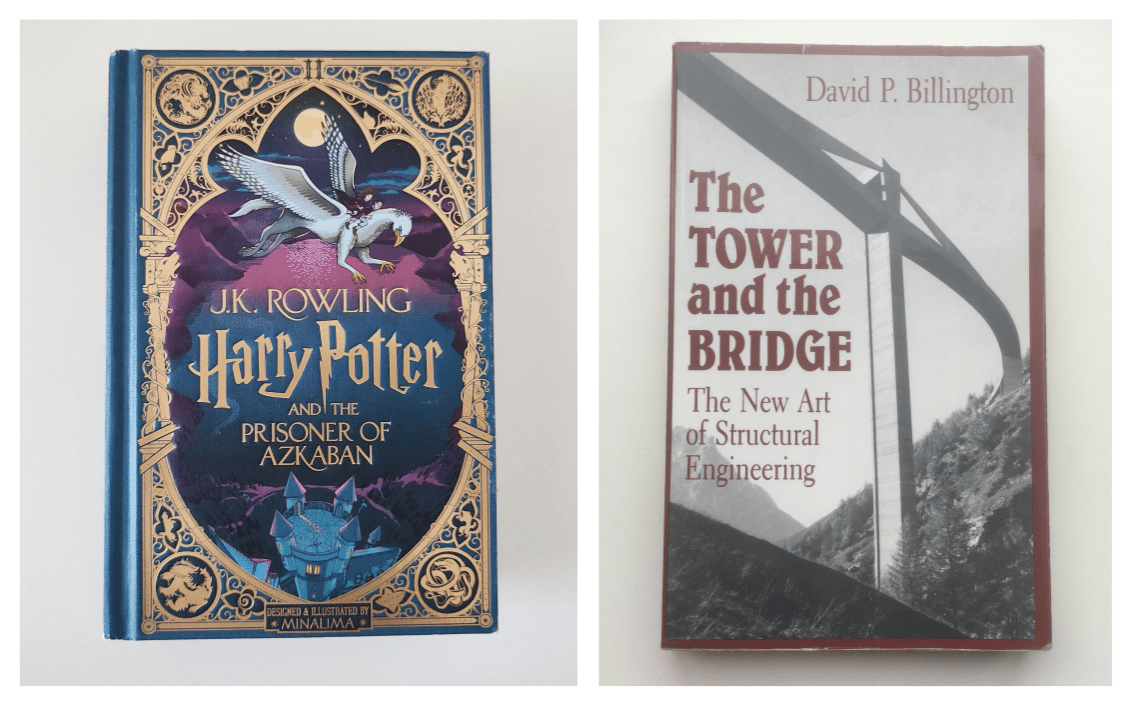
Second, of all classical romance novels, Jane Austen’s Pride and Prejudice will always be our favorite. The story is amusing, the writing is beautiful, and, well, perhaps, Georgian-era England has always fascinated us. “A lady’s imagination is very rapid; it jumps from admiration to love, from love to matrimony in a moment.”—Jane Austen.
Arch of Triumph might not be an obvious choice for many. But for us, it can be summed up in the following way: a German refugee (surgeon) in pre-war Paris, Gauloises (presumably, because of “Algerian. Black tobacco of the Foreign Legion.”), calvados, an aspiring actress, hotel rooms, Laurens green, revenge, calvados/cognac/vodka again, Caporals, a man without a country, a love that was impossible… and an endless string of beautiful words put into sentences. Plenty of them became our favorite quotes, just like this one, “Life did not intend to make us perfect. Whoever is perfect belongs in a museum. “—Erich Maria Remarque.
Next comes an entire book about Mark Rothko and his works—for the sheer reason of being our favorite artist.
The Tower and The Bridge because we’ve once been so impressed by Princeton’s course about bridges (The Art of Structural Engineering: Bridges) that we simply had to have this book at home. “The disciplines of structural art are efficiency and economy, and its freedom lies in the potential it offers the individual designer for the expression of a personal style motivated by the conscious aesthetic search for engineering elegance. These three leading ideals of structural art efficiency, economy, and elegance…”—David P. Billington.
Gone with the Wind because it’s about love, war, slavery, women and power, and Scarlett, of course. Oh, Scarlett, what a character! “After all, tomorrow is another day!”—Margaret Mitchel.
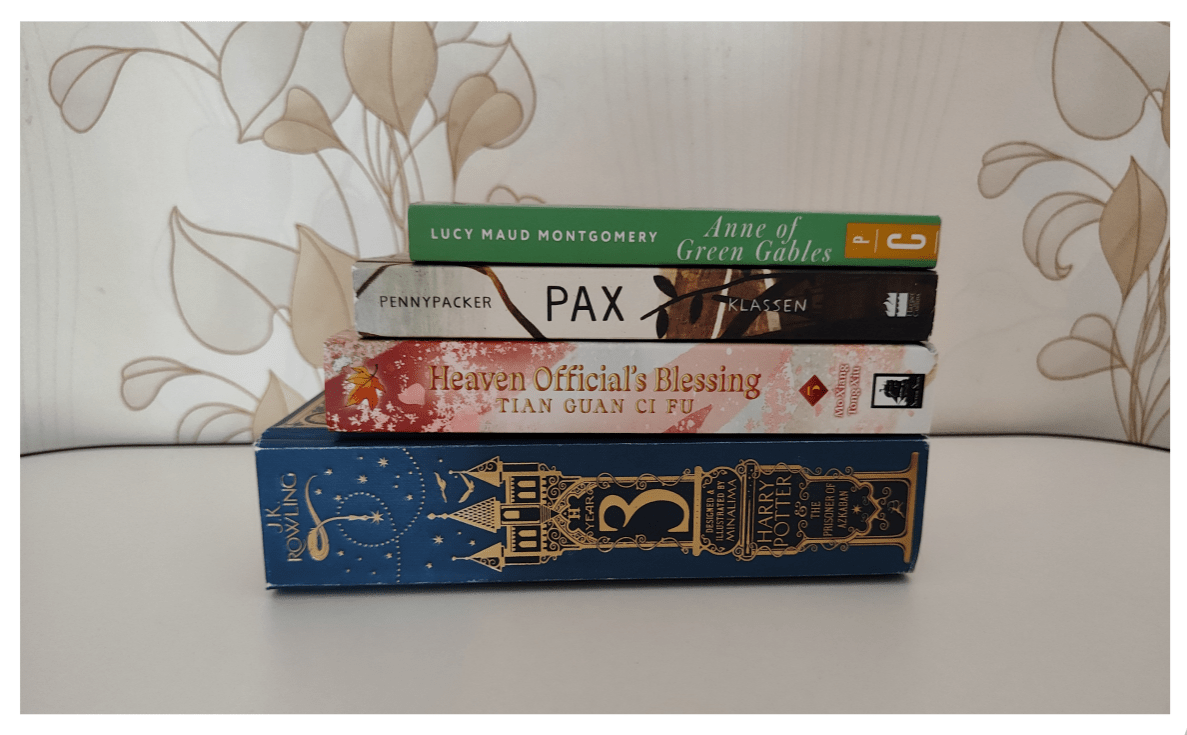
The Little Prince: Whatever age you read the story, you always get a different level of understanding. It’s beautiful, consoling, and wise. “And now here is my secret, a very simple secret: It is only with the heart that one can see rightly; what is essential is invisible to the eye.”—Antoine de Saint-Exupéry.
Pax: You may think that we simply like stories about boys and foxes, but it’s not so simple. How Paxe’s feelings and emotions are described is one thing; the language itself is another. And the book has so many themes covered… “The plain truth can be the hardest thing to see when it’s about yourself. If you don’t want to know the truth, you’ll do anything to disguise it.”—Sara Pennypacker.
The Wonderful Wizard of Oz because it once showed us the unknown, fascinating worlds that we desperately wanted to explore. It was long ago, but the feeling stayed. “But once I had brains, and a heart also; so, having tried them both, I should much rather have a heart.”—L. Frank Baum.
The Green King impressed us immensely once and never fails to do it again when re-read. How can one story be a thriller, a guide to economic theory, and an insight into social and racial inequality at the same time? One thing is certain: the story has always stuck in our minds.
The Miss Peregrine’s Peculiar Children series is our Halloween favorite. It’s a universe—a parallel world like no other—that blends so naturally with real life that you never get a chance to doubt its existence. It seems like these peculiar kids do live among us, and the author has discovered the secret of this unusual, strange world. Oh, and the vintage photographs in the book add so much to the story.
Double Nationalité (in French) is one of our recent favorites (it’s relatively new, published in 2016). It’s a story about understanding who you really are, perfect in every sense: the tale itself, energy, wordplay, and humor. Oh yes, because you’ll laugh so much it’s almost absurd. We did.
Minimalist Books for Inspiration
We also have a few book suggestions on how to implement a minimalist approach to all spheres of your life.
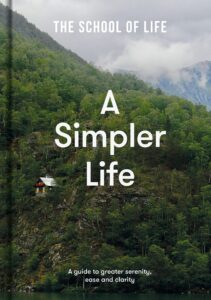 A Simpler Life by The School of Life
A Simpler Life by The School of Life
If you’re looking for a simpler life, A Simpler Life is the book for you. It delves into the philosophy of minimalism, practices a psychological approach, and shows how to be simple in your life, work, and relationships. In brief, to start any change, start from the inside.
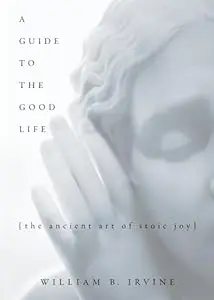 A Guide to the Good Life by William Irvine
A Guide to the Good Life by William Irvine
Are you tired of the feeling of chronic dissatisfaction? Check out A Guide to the Good Life, where you’ll meet with a refreshing look at Stoicism. We’re positive you’ll find a few insights and techniques on how to make your life simpler and happier.
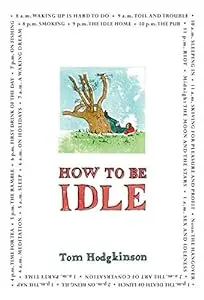 How to Be Idle by Tom Hodgkinson
How to Be Idle by Tom Hodgkinson
How to Be Idle will give you a few tips on how to be idle and happy doing nothing. Sounds like something quite unrelated to minimalism? But, in fact, the connection is there.
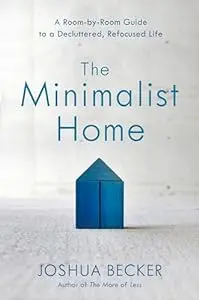 The Minimalist Home by Joshua Becker
The Minimalist Home by Joshua Becker
In The Minimalist Home, the author takes a different approach than Marie Kondo we’ve already mentioned. Joshua Becker suggests asking yourself, “Do I need this?” whenever you want to declutter. He also suggests taking it one room at a time.
We also have three more good books reviewed in our most recent article Top 3 Minimalism Books to Read in 2024. We do recommend that you check them out as well.
Final thoughts
If you’ve been thinking about adding a few minimalist touches to your house or if you’ve already done a good deal of work in the decluttering department but haven’t removed your entire library yet, we hope you’ll find our article helpful. Minimalism isn’t about not having books; instead, it’s about owning them wisely and keeping the titles through few but the ones you really love.



